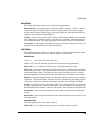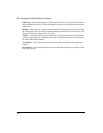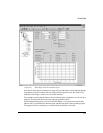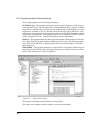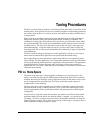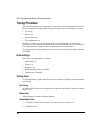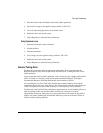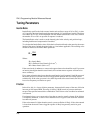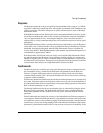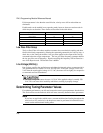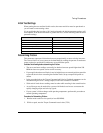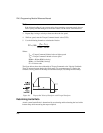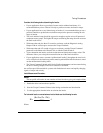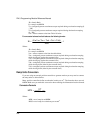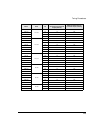
217
Tuning Procedures
Response
The Response adjusts the velocity and position loop bandwidths with a range of 1 to 500 Hz.
In general, it affects how quickly the drive will respond to commands, load disturbances and
velocity corrections. The effect of Response is greatly influenced by the status of the High
Performance Gains.
With High Performance Gains disabled, the actual command bandwidth of the drive system
will be equal to the Response value. In this case the load disturbance correction bandwidth is
very low (approximately 0.1 Hz). Increasing the Response value will reduce the drive’s
response time to velocity command changes but will not affect the response to load or speed
disturbances.
When High Performance Gains are enabled, the Response bandwidth is set to the Response
value. In this case, it reflects both the velocity command and the load disturbance correction
bandwidth. Increasing the Response when the High Performance Gains are enabled will
increase loop stiffness. With High Performance gains enabled, the maximum Response level
recommended is approximately 100 Hz.
If the Inertia Ratio and Friction values are exactly correct and the High Performance Gains
are enabled, changing the Response will not affect the damping (percent of overshoot and
number of ringout cycles) to velocity command changes or load disturbance corrections but
will affect their cycle frequency. The response level generally should be decreased as the load
to motor inertia ratio increases or if High Performance Gains are enabled.
Feedforwards
Feedforward gains are essentially open loop gains that generate torque commands based on
the commanded velocity, accel/decel and the known load parameters (Inertia Ratio and
Friction). Using the feedforwards reduces velocity error during steady state and reduces
overshoot during ramping. This is because the Feedforwards do not wait for error to build up
to generate current commands.
Feedforwards should be disabled unless the absolute maximum performance is required from
the system. Using them reduces the forgiveness of the servo loop and can create instability if
the actual inertia and/or friction of the machine varies greatly during operation or if the Inertia
Ratio or Friction parameters are not correct.
The internal feedforward velocity and acceleration gains are calculated by using the Inertia
Ratio and Friction parameters. The feedforward acceleration gain is calculated from the
Inertia Ratio parameter and the feedforward velocity gain is calculated from the Friction
parameter.
When Feedforwards are enabled, the accuracy of the Inertia Ratio and Friction parameters is
very important. If the Inertia Ratio parameter is larger than the actual inertia, the result would
be a significant velocity overshoot during ramping. If the Inertia parameter is smaller than the
actual inertia, velocity error during ramping will be reduced but not eliminated. If the Friction
parameter is greater than the actual friction, it may result in velocity error or instability. If the



